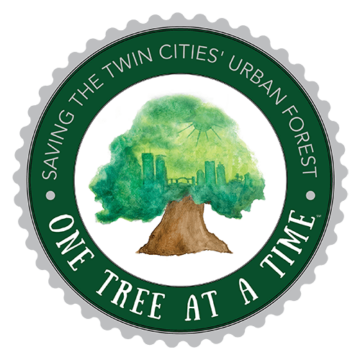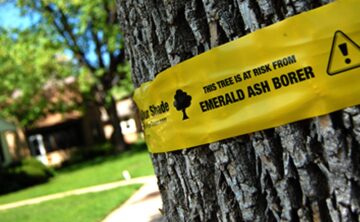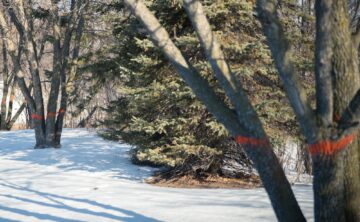Rainbow’s One Tree At a Time Initiative
Since 2009 when Emerald Ash Borer was first discovered in the Twin Cities, Rainbow has been dedicated to creating scientifically proven methods to protect ash trees against this invasive pest. While we can’t manage the entire urban forest, we can all help by protecting One Tree at a Time. The first step is to determine if you have an ash tree on your property.

What is Emerald Ash Borer?
Emerald Ash Borer (EAB) is an invasive beetle from Asia. It was first discovered in the Twin Cities in St. Paul in 2009 and has since spread throughout the area. EAB larvae attack and kill ash trees by eating the inner bark, which prohibits the tree’s ability to transport water and other nutrients. Once a tree is infested with EAB, it has very little chance of survival. The only proven method of saving an ash tree EAB is with a proactive treatment.
Impact of EAB on the Twin Cities
With one in five trees in the Twin Cities being an ash tree, the loss of our ash trees would substantially impact our urban environment. The environmental and economic value of trees is well documented. Mature ash trees provide a significant amount of valuable tree canopy in our community.
- One mature ash tree will intercept 2,216 gallons of water in one year
- Trees produce the cooling effects of ten air conditioners operating 20 hours per day
- One ash tree can eliminate 1,011 lbs of atmospheric CO2
- Trees can increase your property value by 20%
What can homeowners do?
Twin Cities’ residents with ash trees must take action before it’s too late. Once an ash tree is infested with EAB, it has almost zero chance of survival without treatment. It’s essential to create a plan for your ash tree and there are only two options: treat or remove your tree.
Rainbow Treecare will inspect your ash tree(s) at no cost to you to help determine if treatment is the best option. Together we can save the urban forest One Tree at a Time.
Citywide discounts are available for the protection of ash trees. See the list of participating cities.
Amazing Ash Tree Facts to Impress Your Friends
- Ash are a member of the Olive family. Other close cousins to the ash include lilacs, jasmine, forsythia, and privets.
- Ash trees are either male (seedless) or female (seed-bearing), compared to most trees being both male and female
- The largest green ash in Minnesota is found near Fairfax, MN – southwest of the Twin Cities. It was nearly five feet in diameter when last measured.
- Ash trees were a common replacement tree for elms lost to Dutch elm disease. This is a major reason why there are so many of them in the Twin Cities.

Finding the Right Ash Tree Replacement in Minnesota
Many people across Minnesota are losing their ash trees because of Emerald Ash Borer (EAB), an invasive species of beetle from Asia. EAB larvae feed on the

Emerald Ash Borer (EAB) in Minnesota Report for 2022
What is the status of Emerald Ash Borer in Minnesota? As of May 2022, EAB has been found in 40 counties across the state of

My City Tagged My Tree, Now What?
As Emerald Ash Borer (EAB) continues to impact trees across Minnesota and the Twin Cities metro area, some residents are returning home from work to



